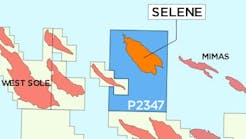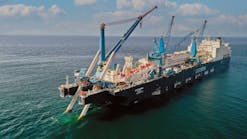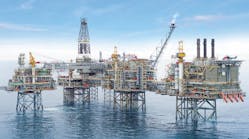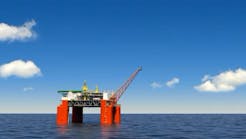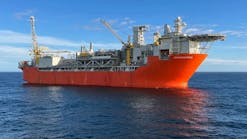What about new generation of energy professionals?
Given the wide number of articles dealing with the demographic profile of oil and gas professionals over the past year, it is safe to assume that oil company managements are now aware of the "graying" situation in their technical ranks. The real question is not the need for new people, but their university preparations and skill sets.
Except in academic halls, it is difficult to make one's career in a single discipline anymore. Professionals need expertise in at least two fields, if not three, to be effective.
The "jargon walls" that once separated the professions are being modified as each profession comes to understand the other's unique view of the energy problem. We see this most clearly in the integrated software packages that allow one professional to work on any aspect of an exploration or development project.
New professionals will enter this environment needing to move freely between the several technical endpoints of their team. Only the broader horizontal understanding of other professional fields will lead to success.
Changing business
New energy professionals will face a transitional business, or rather a business that is widening its scope of energy resources. Just as energy sources expanded away from coal to include oil and natural gas in the 20th century, these fuels, which currently dominate energy usage, will be augmented by hydrogen-powered systems in the 21st century.
Thus the oil and gas professional will transmute into a more complex energy professional. They will not only need to know geology, geophysics, engineering, and business. They will also need familiarity with elemental chemistry and the nuances of hydrogen engineering.
Hydrogen is an extremely reactive molecule and releasing it from its bonds to other elements requires significant energy input (thermal or electrical). Oil and gas are the obvious feedstocks for the developing hydrogen economy for stationary power and transportation fuel systems.
Lest earth scientists despair, there will still be a need to find and produce oil and gas for chemical plants and transportation. Liquid fuels are more safely handled than gaseous fuels. Industry and society continue to require a wide variety of plastics and specialty chemicals, so the need for basic hydrocarbon feedstock will continue.
Finding hydrogen
The coming hydrogen economy will likely spur the need for more igneous, volcanic, and deep-earth specialists to identify mantle-related sources of hydrogen. New seismic techniques, or other yet-to-be-developed sensing technologies will be required to find these deeply buried resources. Deep, high-temperature drilling will also be required to find and develop mantle resources. As always, the real question is economic: What is the most cost-effective way to develop and use the energy resources of the earth?
EXPLORATION: Indonesia surveys
TGS-Nopec Geophysical Co. announced the start of two non-exclusive 2D seismic programs off Indonesia. The surveys are being recorded ahead of licensing rounds to be held by Indonesia Directorate General of Oil and Gas (MIGAS) in 2002 and 2003.
Circum Makassar (CM-01), located in the Makassar Straits, is an 8,000-km program. The survey will provide a grid of data over the Makassar Straits and image the large thrusts offshore Sulawesi. WesternGeco's vessel, Horizon, is acquiring the data. Matahari (MH-01) is being shot in the Arafura Sea between Indonesia and Australia. The 8,000-km survey will provide a regional grid seismic data to evaluate the geological evolution and petroleum systems in this lightly explored region. The area is adjacent to the major Australian gas-condensate accumulations of Sunrise-Troubadour, Evans Shoals, and the recent Abadi-1 discovery in Indonesian waters. MultiWave Geophysical's vessel Polar Duke is acquiring the data.
TECHNOLOGY: Anisotropic processing
CGG's launched a new anisotropic seismic data processing service, A+ processing. It exploits the Earth's anisotropy to deliver a sharper, focused image of the reservoir and gives insight into the Earth's properties. Conventional operators based on velocity (VRMS) do not properly focus the image. Adding anellipticity to processing operators, using the effective anellipticity of the media, is the key. From a geometrical point of view, anellipticity corresponds to the deviation from the ellipse. One way of describing the anisotropic complexity of the Earth's subsurface is to introduce anellipticity into various elliptical operators applied during seismic time processing. The new processing takes advantage of the natural phenomenon of anisotropy, instead of trying to get round it. More information on the process is available from Daniel Van Hulle (Tel: (33) 1 64 47 39 48).


